All posts by Experian Marketing Services

We spoke with industry leaders from Ampersand, Basis Technologies, Captify, Cuebiq, CvE, Fetch, Madhive, MiQ, and Samsung to gather insights on how innovations in data and identity are creating stronger consumer connections. Here are five key insights to consider. 1. Build on trust with first-party data Stricter privacy regulations and growing customer expectations mean businesses must rethink how they gather and use data. A robust first-party data strategy centers on gathering high-quality data, such as behavioral and transactional data. By using behavioral, lifestyle, and purchasing data, brands can craft personalized strategies that align with their goals. This approach balances effective targeting with building trust and complying with privacy rules. Integrating identity solutions like Unified I.D. 2.0 (UID2) and ID5 into existing data strategies improves interoperability across platforms while keeping user privacy intact. These tools help create more effective campaigns. "We've been preparing and leaning into educating our clients around the value of first-party data. These are very important and primary considerations in any of our campaigns."April Weeks, Basis Technologies 2. Align metrics with business goals To demonstrate clear value, campaigns need to tie their outcomes to broader goals. Relying only on click-through rates or CPMs won’t cut it. Metrics that measure meaningful results, like driving sales or increasing customer retention, provide greater transparency than surface level data, like clicks or impressions. A continuous feedback loop between targeting and measurement ensures campaigns can be refined to better align with business objectives. This feedback helps marketers understand who they are targeting and how those audiences are driving key business results. Shifting focus to metrics that resonate with stakeholders ensures that marketing efforts are evaluated based on their true contribution to the company's objectives. "The television industry has access to more data than ever before, and at Samsung Ads, our ACR technology helps us provide valuable insights about what content and ads are being viewed. This abundance of data enables us to support clients in aligning their campaigns with business objectives effectively."Justin Evans, Samsung Ads 3. Personalize experiences to boost engagement Personalization drives stronger customer relationships by delivering tailored experiences to individual customer needs. Using data-driven insights to fine-tune offers and messaging makes interactions more relevant, strengthening brand loyalty. Combining behavioral, lifestyle, and transactional data provides a comprehensive understanding of the customer journey and ensures each touchpoint feels personal. Testing and iterating on personalization strategies also helps identify which data and approaches yield the best results. Scaling these efforts means customers receive the right messaging at the right time, and businesses see better outcomes. "Every business should be building a data strategy that thinks about the different versions of data that exist and how they bring that together. They don't necessarily need to own all of it but have a clear rationale and strategy about where you're using which data sets."Paul Frampton, CvE 4. Utilize advanced measurement tools for smarter decisions Improving the effectiveness of campaigns starts with using sophisticated measurement tools to gain actionable insights. Using analytics like brand lift studies, foot traffic analysis, app download tracking, incrementality, and share of search allows marketers to understand the full impact of their efforts. With these resources, teams can pinpoint what’s working, make real-time adjustments, and refine their approach. This adaptability ensures budgets are used as effectively as possible. Learn how Swiss Sense measured marketing outcomes using Mosaic® "We are playing a leading role in democratizing new tools for local advertisers. By mimicking the marketing funnel mentality, we've introduced solutions ranging from measuring brand lift to tracking foot traffic and app downloads."Luc Dumont, Madhive 5. Adapt quickly to stay competitive The only constant in advertising is change. Adapting quickly to new technologies and consumer behaviors keeps businesses competitive. A culture of agility fosters innovation, making it easier to respond to industry shifts and discover new opportunities. Companies that anticipate change and invest in modern data solutions position themselves for long-term growth. Whether it’s adjusting to privacy updates, exploring emerging tech, or staying flexible, businesses must continuously invest in adapting their platforms and strategies. "Falling behind is not really an option. There's always a change in advertising and in data where there's a new horizon. The people who stay close to that and innovate will always follow it."Amelia Waddington, Captify Shaping the future Building meaningful consumer connections requires advertisers to combine robust data strategies with flexibility and innovation. By focusing on these five considerations, marketers can adapt to today’s challenges while preparing for what’s ahead. Connect with our experts Latest posts
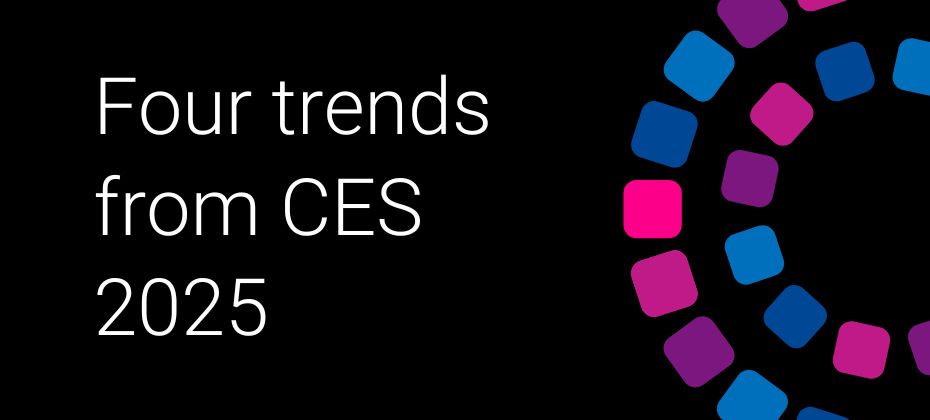
Every year, the Experian team attends the Consumer Electronics Show (CES) in Las Vegas to study the latest technological advancements and innovations that shape the AdTech industry. The energy at CES 2025 was palpable, with a whirlwind of conversations around artificial intelligence (AI), connected TV (CTV), privacy-first solutions, and sustainability in advertising. Here are four standout themes from this year’s event. 1. The AI evolution: More buzzwords, but growing potential AI dominated discussions this year, but the gap between hype and practical application was still evident. While some vendors showcased innovative tools for campaign optimization and audience creation, much of the buzz felt aspirational. The use of AI to generate audiences based on new types of data is a promising sign of things to come. Data providers, including those collaborating with Experian, are beginning to test AI tools to enhance audience accuracy and scale. The AI space still feels frenetic, but the potential for transformative change is undeniable. "AI was a hot topic, with discussions ranging from campaign optimization tools to audience selection. While many leaned on buzzwords, there were glimpses of legitimate use cases."Brooke Logan, VP of Data Strategy and Partnerships 2. CTV: A race for quality and curation CTV remained a popular topic at CES, particularly around the challenges of fragmentation and scale. Sellers are grappling with an oversupply of inventory, leading to a renewed focus on curation. Conversations highlighted the importance of premium audiences, brand safety, and identity resolution. In the fragmented CTV landscape, advertisers want to be able to define an audience once, have that audience be highly addressable, and then activate everywhere. One standout theme was the shift in CTV monetization strategies. With linear TV revenues declining, major publishers are exploring ways to maximize yields on streaming platforms. Direct-sold premium inventory still reigns, but programmatic is gaining traction—a trend we’re seeing driven by publishers seeking scalable solutions. "CTV remains fragmented. While premium inventory is largely direct-sold, big publishers are exploring ways to boost yield on streaming as linear revenue declines."Lauren Portell, Sr. Account Executive, Advanced TV 3. Privacy-first solutions The regulatory landscape continues to evolve, and advertisers are responding with innovative, privacy-centric methodologies. For industries like healthcare, privacy-first solutions are being developed from the ground up to comply with current and future regulations. The emphasis on cookieless and contextual advertising remains strong, with data providers utilizing first-party data to enrich audience targeting strategies. "Providers across verticals that are typically more sensitive are developing methodologies from the ground up based on current and future potential privacy regulations."Adam Kobus, Director of Data Partnerships 4. Eco-conscious advertising: Building a sustainable future Sustainability emerged as a growing focus, as indicated by initiatives like Scope3 and Experian’s own carbon reduction goals. Companies are exploring ways to reduce the environmental impact of ad serving and data management. For example, platforms like AdGood are transforming unused CTV inventory into opportunities for non-profit initiatives. While not strictly eco-focused, these efforts signal a shift toward more conscientious advertising practices. "Sustainability is gaining attention, with efforts to reduce the carbon footprint through eco-conscious advertising, data management practices, and ad serving."Erin Wolf, Sr. Account Executive, Demand Partnerships The buzz around Experian The launch of the Experian marketplace and the Audigent acquisition were major talking points, underscoring Experian’s commitment to innovation in AdTech. Together, Experian and Audigent will be an end-to-end solution where publishers big and small can empower marketers to better understand their customers, create precise audience segments, and activate those audiences across the best inventory. Likewise, Experian’s new data marketplace connects TV operators, programmers, supply partners, and demand platforms with top-tier third-party audiences across retail, CPG, health, B2B, and location intelligence. All audiences delivered from our marketplace benefit from our best-in-class offline and digital identity graphs, which ensure addressability across all channels like display, mobile, and CTV. An exciting year ahead CES 2025 underscored the rapid evolution of the advertising ecosystem. From AI to CTV and privacy-first solutions, the industry is adapting to new challenges and opportunities. As Experian continues to lean into these trends, our role in powering data-driven advertising through connectivity remains more focused than ever. We’re excited to see how these themes will evolve throughout the year and look forward to collaborating with our partners to shape the future of digital advertising. Follow us on LinkedIn or sign up for our email newsletter for more informative content on the latest industry insights and data-driven marketing. Latest posts
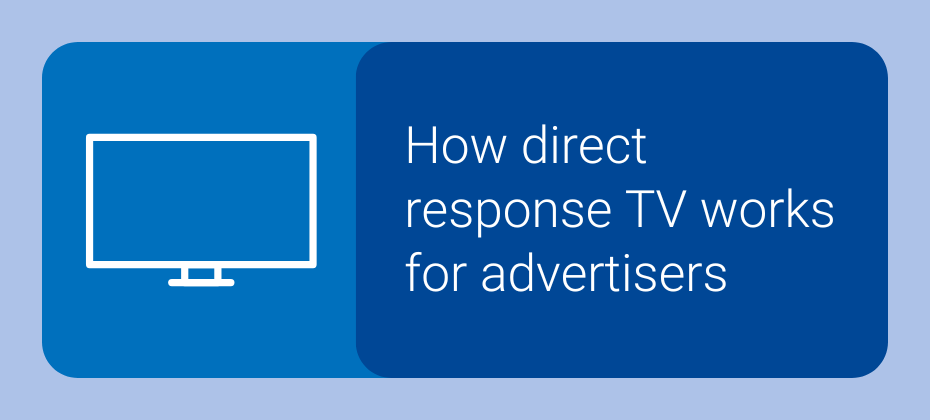
Suppose you're watching your favorite TV show, and an ad suddenly catches your attention. It urges you to take immediate action, whether to call a number, visit a website, or text a keyword like ‘DETAILS’ to a specific number for more information. This is direct response television (DRTV), a powerful form of advertising available on all TV types — including live, cable, and streaming — that directly connects brands with consumers to drive immediate engagement and measurable results.
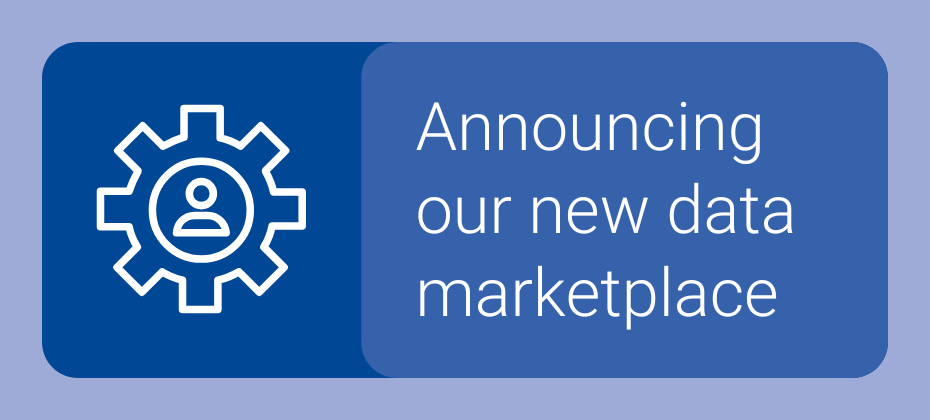
Following the success of our recent launch of Third-Party Onboarding, we are excited to introduce the Experian marketplace, a new addition to our portfolio of data-driven activation solutions. Experian’s marketplace bridges TV operators, programmers, supply partners, and demand platforms with top-tier third-party audiences across retail, CPG, health, B2B, and location intelligence. Easily activate premium audiences from leaders like Attain, Alliant, Circana, and Dun & Bradstreet - driving precise, efficient consumer reach. "Experian has been a longstanding partner of DISH Media, and we’re excited to be an early adopter of their marketplace which leverages the foundation of their identity solutions to ensure maximum cross-channel reach as we look to expand the breadth and depth of data we use for addressable TV."Kemal Bokhari, Head of Data, Measurement & Analytics, DISH Media As privacy regulations evolve and traditional identity signals shift, many activation platforms face declining addressability. This impacts their ability to effectively reach consumers, which is critical to staying competitive. Experian’s marketplace, powered by our identity graphs which include 126 million households, 250 million individuals, and 4 billion active digital IDs, enables audiences to be easily activated and maintain high addressability across display, mobile, and connected TV (CTV) channels. Benefits of Experian's marketplace Enhanced addressability and match rates: All audiences delivered from our marketplace benefit from our best-in-class offline and digital identity graphs, which ensure addressability across all channels like display, mobile, and CTV. Unlike other data marketplaces, Experian ensures all identifiers associated with an audience have been active and are targetable, improving the accuracy of audience planning. Simplified audience planning and distribution for TV Operators: TV operators can build custom audiences matched directly to their subscriber footprint and distribute them across all advanced TV channels (data-driven linear, addressable, digital, and CTV) for maximum impact. Diversification within the data marketplace ecosystem: With the recent departure of Oracle’s advertising business, the optionality for buyers and sellers to connect with third-party data has become increasingly limited. With Experian marketplace, we’re excited to offer a new solution to the market that ensures data-driven targeting can continue to take place at scale. Lower activation costs: Experian’s marketplace offers transparent, pass-through pricing with no additional access fees, enabling partners to maximize their earnings while reducing costs. Audience diversity and scale: Platforms can access a broad range of audiences across top verticals from our partner audiences, which can be combined with 2,400+ Experian Audiences. This offers the flexibility, reach, and scale necessary to effectively execute advertising campaigns. Remove compliance concerns: Experian’s rigorous data partner review ensures available audiences comply to all federal, state and local consumer privacy regulations. “Circana and Experian have enjoyed a deep partnership for over a decade. We are exceedingly excited to extend our partnership and be an early adopter and launch partner of the Experian data marketplace. This additional capability will enable the ecosystem to more easily access Circana’s purchase-based CPG and General Merchandise (for example Consumer Electronics, Toys, Beauty, Apparel etc.) audience segments to drive performance outcomes across all media channels.”Patty Altman, President, Global Solutions, Circana “Capturing the attention of target audiences across channels is critical for marketers navigating an increasingly connected digital world. We are excited to be an exclusive provider of B2B solutions within Experian’s marketplace, helping brands and media agencies to accelerate their reach, addressability and targeting capabilities across TV, mobile and connected TV channels.” Georgina Bankier, VP of Platform Partnerships at Dun & Bradstreet Better connections start here: Experian's marketplace Experian’s marketplace, easily accessible from our Audience Engine platform, brings unparalleled addressability, enabling our clients to reach more relevant consumers and increase revenue. If you’re interested in learning more about Experian’s marketplace or becoming an active buyer or seller in our marketplace, please contact us. Contact us Latest posts
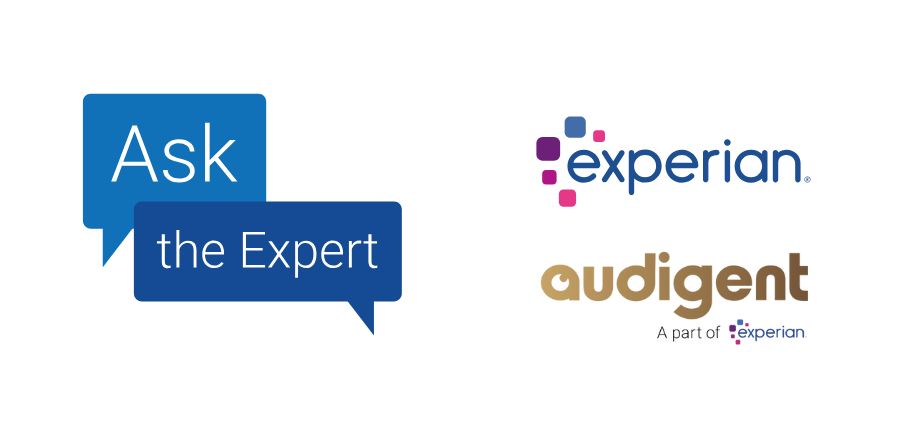
Note: This Ask the Expert was recorded prior to Experian’s acquisition of Audigent and discusses industry trends and how we’ve worked together in the past. Adopting new strategies based on trust due to evolving privacy regulations and the gradual loss of traditional signals, like third-party cookies, is essential to successfully navigating the future of digital advertising. Advertisers and marketers are at a crossroads, facing the challenge of maintaining personalization and precision while respecting consumer expectations around privacy. To stay competitive, brands must adopt future-ready strategies that focus on trust, privacy-forward technologies, and scalable solutions. In our latest Ask the Expert segment, recorded before Experian acquired Audigent, we explore how first-party data and advanced contextual audience targeting are two critical approaches for successfully navigating these changes. With insights from Greg Williams, President of Audigent, now part of Experian, and Crystal Jacques, VP of Sales at Experian, we discuss how these tools can empower your brand for long-term success. First-party data as a cornerstone strategy First-party data, a powerful tool for building meaningful connections with your audience, has emerged as a fundamental pillar of future-ready strategies. When collected and used effectively, it provides brands with a detailed understanding of consumer preferences and behaviors, enabling real-time campaign adjustments for maximum impact. “Data has become part of every step of the digital advertising supply chain, and should be part of everybody’s buys… the more you can include data in your digital marketing, the better off and the more power you have."Greg Williams, President, Audigent With the continual loss of signal, including third-party cookies, first-party data has proven to be key for brands to stay both competitive and privacy-compliant. Brands using first-party data are better positioned to overcome the challenges of signal loss. This data facilitates improved media targeting and personalized messaging, driving greater engagement and return on investment. Contextually-Indexed Audiences build relevance Experian’s Contextually-Indexed Audiences enable advertisers to target users based on their interests in real-time, without relying on cookies or mobile ad IDs. Machine learning analyzes and maps traffic from over two million websites, linking to Experian’s 2,400 audience segments. With added benefits like audience customization and flexible activation through Audigent’s private marketplaces (PMPs) or demand-side platforms, Experian is setting a new standard for scalable audience targeting. For automotive advertisers, this could mean reaching consumers actively researching luxury electric vehicles on relevant sites. Unlike outdated methods, contextual targeting aligns the message with consumer intent, balancing high precision with consumer privacy. Automotive success story Audigent’s innovative solutions have delivered tangible results. Williams mentions how they helped an automotive brand achieve double the scale and triple their goal of driving test drives. This stands as a testament to the real-world effectiveness of contextual audience strategies and Experian's role in executing them. How to stay ahead of change Here are five strategies to help your brand remain future-ready amid privacy challenges and signal loss: Prioritize first-party data: Build trust and improve targeting accuracy by relying on data that you own directly from your consumers. Test privacy-forward tools: Experiment with solutions like contextual targeting and Google’s Privacy Sandbox to future-proof your advertising. Strengthen identity framework: Create systems to securely manage and use data for cross-channel decision making. Use scalable tools: Partner with trusted providers to deploy solutions that adapt to changing industry standards. Stay proactive and flexible: Continuously evaluate trends and refine approaches to align with emerging consumer and regulatory expectations. A deeper conversation For additional insights, watch our full Q&A. Greg Williams and Crystal Jacques discuss the future of audience targeting, how first-party data reshapes marketing strategies, and how Experian and Audigent have collaborated in the past. Watch now About our experts Greg Williams, President, Audigent Greg Williams is Audigent's President, responsible for managing Audigent’s vast portfolio of ecosystem partners, enterprise sales, marketing, and client success. An innovator in programmatic ad buying, Williams co-founded MediaMath and was instrumental in building and scaling that company in the US and internationally. He led MediaMath's international expansion in 2011 and grew that business from zero to a top revenue driver for the company in three years. During his 14 years at the company, Williams held global roles and built teams across every function of the organization -- most notably leading business and market development, product development, and partnerships. Prior to co-founding MediaMath, Williams held senior positions at [X+1] (which was later acquired by RocketFuel), Nielsen, and Accenture. Crystal Jacques, Head of Enterprise Sales, Experian Head of Enterprise Partnerships, leading Experian's go-to-market team across all verticals. With over ten years of experience in the Identity space, Crystal brings a wealth of expertise to her role. She joined Experian in 2020 through the Tapad acquisition, following her successful stint as the head of Global Channel Partnerships for Adbrain, which The Trade Desk later acquired. Latest posts

Retail media has been on everyone’s radar for a while. Commerce media has also established itself as a significant player in the AdTech industry over the past few years. While retail media focuses on engaging customers within a retailer’s ecosystem, commerce media goes beyond these boundaries to capture the entire shopping journey, spanning multiple touchpoints, channels, and platforms.
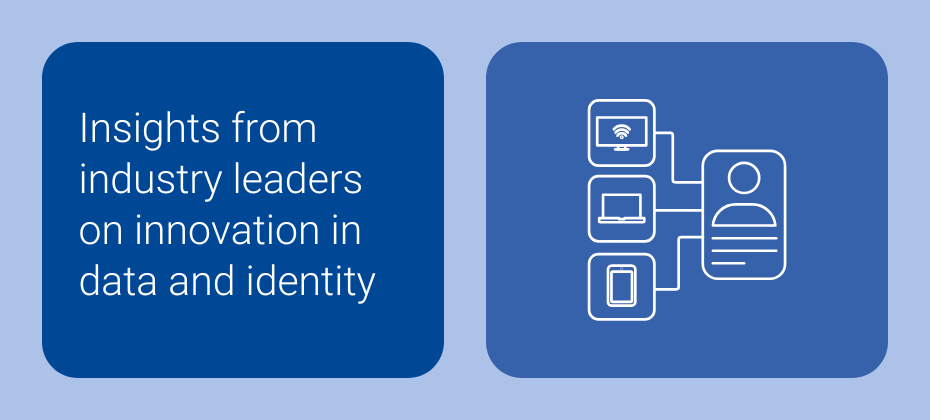
Consumers engage with content and advertisements across various devices and platforms, making an identity framework essential for establishing effective connections. An identity framework allows businesses to identify consumers across multiple touchpoints, including the relationships among households, individuals, and their devices. Combined with a robust data framework, businesses can understand the relationship between households, individuals, and marketing attributes. Consequently, businesses can tailor and deliver personalized experiences based on individual preferences, ensuring seamless consumer interactions across their devices. We spoke with industry leaders from Audigent, Choreograph, Goodway Group, MiQ, Snowflake, and others to gather insights on how innovations in data and identity are creating stronger consumer connections. Here are five key considerations for advertisers. 1. Embrace a multi-ID strategy Relying on a single identity solution limits reach and adaptability. Recent data shows that both marketers and agencies are adopting multiple identity solutions. By embracing a multi-ID strategy with solutions like Unified I.D. 2.0 (UID2) and ID5, brands can build a resilient audience targeting and measurement foundation, ensuring campaigns remain effective as identity options evolve across channels. A diversified identity approach ensures that advertisers are not left vulnerable to shifts in technology or policy. By utilizing multiple ID solutions, brands can maintain consistent reach and engagement across various platforms and devices, maximizing their campaign effectiveness. "I don't think it will ever be about finding that one winner...it's going to be about finding the strengths and weaknesses and what solutions drive the best results for us."Stephani Estes, GroupM 2. Utilize AI and machine learning to enhance identity graphs Identity graphs help marketers understand the connections between households, individuals, their identifiers, and devices. This understanding of customer identity ensures accurate targeting and measurement over time. AI and machine learning have become essential in making accurate inferences from less precise signals. These technologies strengthen the accuracy of probabilistic matches, allowing brands to understand consumer behavior more effectively even when data fidelity is lower. Adopting a signal-agnostic approach and utilizing various ID providers enhances the ability to view consumers' movements across platforms. This strategy moves measurement beyond isolated channels, providing a holistic understanding of campaign effectiveness and how different formats contribute to overall performance. By integrating AI and machine learning into identity graphs, advertisers can develop more cohesive and effective marketing strategies that guide customers seamlessly through their buying journey. "What we're finding is more and more identity providers are using Gen AI to locate connections of devices to an individual or household that maybe an identity graph would not identify."David Wells, Snowflake 3. Balance privacy with precision using AI AI-driven probabilistic targeting and identity mapping provide effective solutions for privacy-focused advertising. Rather than relying on extensive personal data like cookies, AI can use limited, non-specific information to predict audience preferences accurately. This approach allows advertisers to reach their target audience while respecting privacy—a crucial balance as the industry shifts away from traditional tracking methods. According to eMarketer, generative AI can further enhance audience segmentation through clustering algorithms and natural language processing. These tools enable more granular, privacy-compliant targeting, offering advertisers a pathway to reach audiences effectively without needing third-party cookies. "I think the biggest opportunity for machine learning and AI is increasing the strength and accuracy of probabilistic matches. This allows us to preserve privacy by building models based on the features and patterns of the consumers we do know, instead of transmitting data across the ecosystem."Brian DeCicco, Choreograph 4. Activate real-time data for better engagement Real-time data enrichment introduces dynamic audience insights into the bidding process, enabling advertisers to respond instantly to user actions and preferences. This agility empowers marketers to craft more relevant and impactful moments within each campaign. "Real-time data enrichment--where data companies can have a real-time conversation with the bid stream--is an exciting part of the future, and I believe it will open the door to activating a wide variety of data sets."Drew Stein, Audigent 5. Create and deploy dynamic personas using AI Generative AI transforms persona-building by providing advertisers with richer audience profiles for more precise targeting. This approach moves beyond traditional demographic categories, allowing for messaging that connects more meaningfully with each consumer. By using generative AI to craft detailed personas, advertisers can move beyond generic messaging to create content that truly resonates on an individual level. This personalized approach captures attention and strengthens consumer relationships by addressing their specific needs and interests. "One cool thing we've built recently is a Gen AI-based personas product that generates personas to create highly sophisticated targeting tactics for campaigns."Georgiana Haig, MiQ Seize the future of data-driven engagement Focusing on these five key innovations in data and identity allows you to adapt to the evolving media landscape and deliver personalized experiences to your audience. Connect with our experts Latest posts

The concept of the "hedged garden" is gaining traction in the AdTech space as a promising new approach. It offers a more controlled and protected environment for advertisers, reshaping how digital advertising operates. But what exactly is a hedged garden, and could it be the solution we've been looking for? Let's dive into the details and explore its implications.

Brands are increasingly focused on offering personalized experiences while respecting consumer privacy. Addressability enables them to reach specific audiences with relevant messages, and personalization crafts unique content that aligns with each audience's interests and needs. By combining these strategies, brands can create more relevant and effective marketing campaigns. With new regulations and signal loss reshaping the landscape, alternative identifiers like the ID5 ID and The Trade Desk's Unified I.D. 2.0 (UID2) are gaining importance. These tools give advertisers a more holistic view of consumers across channels, enhancing personalization and addressability even as traditional third-party cookies lose relevance. To shed light on this topic, we interviewed experts from Audigent, Basis Technologies, CvE, ID5, MiQ and others. They shared insights on navigating privacy, utilizing new identifiers, and enhancing personalization with consent. Drawing from their perspectives, we've identified five considerations to help brands adapt and succeed in this evolving landscape. 1. Embrace a privacy-centric approach With the increasing focus on consumer data protection, prioritizing privacy in your addressability efforts is essential. Implement strict data guidelines to protect personally identifiable information (PII) and maintain compliance with state-specific regulations. To achieve this, empower consumers by providing clear and transparent choices about data sharing and honoring their preferences. Avoid targeting based on protected categories or sensitive information. By adopting a privacy-first mindset, you can build consumer trust while still delivering relevant advertising experiences. “It's important to champion consumer privacy and the free internet. We need to strike a balance between the two. This balance is essential for our jobs, the economy, news, politics, and all the valuable content and information we rely on.”Drew Stein, Audigent 2. Personalize with consent Consumers are more willing to share their information when they see clear benefits. In fact, over half of shoppers—and two-thirds of Gen X and Millennials—express a desire to receive holiday shopping deals directly from their preferred brands1. By offering value through loyalty programs, special offers, or interactive platforms, you can personalize experiences without compromising privacy. To implement this strategy, encourage consumers to share their preferences and needs by being transparent and giving them control over their data. This approach builds trust, empowers your audience, and enhances personalization. “Building personalization based on the data consumers have consented to share should lead to a positive experience that drives better engagement because it's relevant to them.” April Weeks, Basis Technologies 3. Personalize with contextual targeting Contextual targeting involves delivering ads based on the content users are currently engaging with rather than user identifiers. By focusing on personalization through contextual targeting and dynamic content, you can align your strategies with your audience's real needs and interests. This approach allows advertisers to reach consumers on websites with more visitors matching the demographics, behaviors, or interests they want to target. “Personalization absolutely can thrive. We have various solutions, all utilizing IDs for targeting and personalization. Beyond that, we can also personalize using context, geo-contextual data, and creative strategies.” Georgiana Haig, MiQ 4. Use alternative identifiers As advertisers move beyond third-party cookies, exploring alternative identifiers offers reliable means to connect with consumers. Options like email addresses or device IDs provide direct connections, improving targeting accuracy. Utilize identity graphs to link different signals and identifiers to establish strong ties to individual users or households. This approach maintains, and can even enhance, your ability to reach the right audience and measure campaign performance. “It's not just about maintaining addressability. It's about massively improving addressability. When we run tests with some of our clients, they're seeing 30, 40, 50, 60% incremental reach by using ID5 versus cookies.” Mathieu Roche, ID5 5. Build partnerships Navigating the complexities of addressability doesn't have to be a solo effort. Partnerships between brands, publishers, and tech providers can lead to innovative solutions that benefit everyone. Consider engaging in data partnerships to access new audience segments without maintaining extensive data. Collaborations focused on your tech stack can enhance your ability to deliver personalized content effectively and at scale. “The rise of second-party data partnerships is going to be an interesting trend over the next couple of years. And if you need mass scale across the world, I think that's a much more cost effective and scalable way to do it.” Paul Frampton, CvE Steering toward success The future of addressability and personalization hinges on your ability to adapt to the changing privacy landscape while delivering meaningful, personalized experiences. By focusing on these five key considerations, you can navigate the complexities of modern advertising, build stronger relationships with consumers, and drive sustainable growth. Connect with our addressability experts Footnote Online survey conducted in June, 2024 among n=1,000 U.S. adults 18+. Sample balanced to look like the general population on key demographics (age, gender, household income, ethnicity, and region). Latest posts